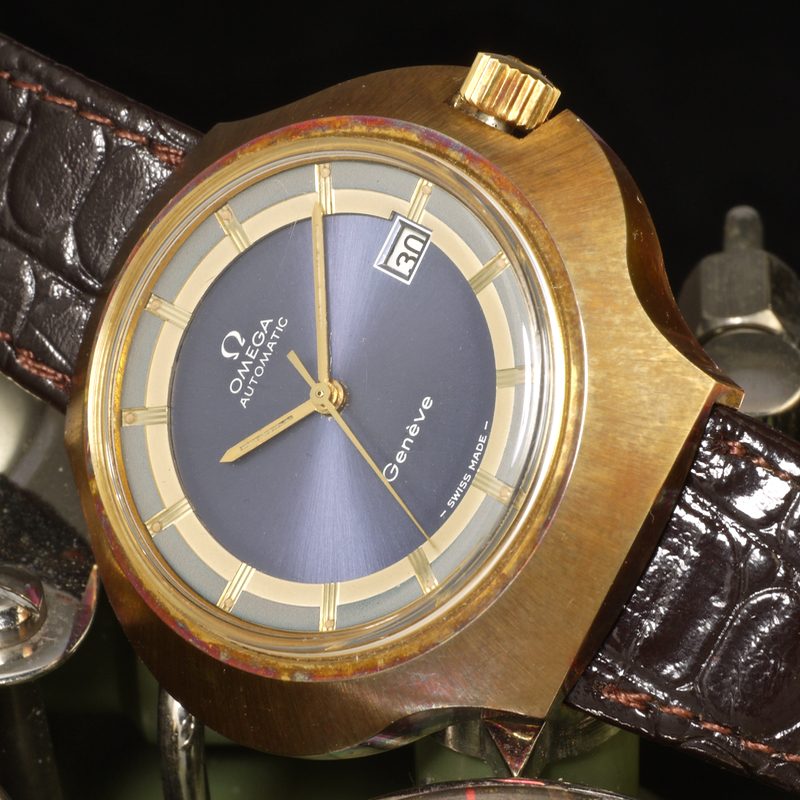
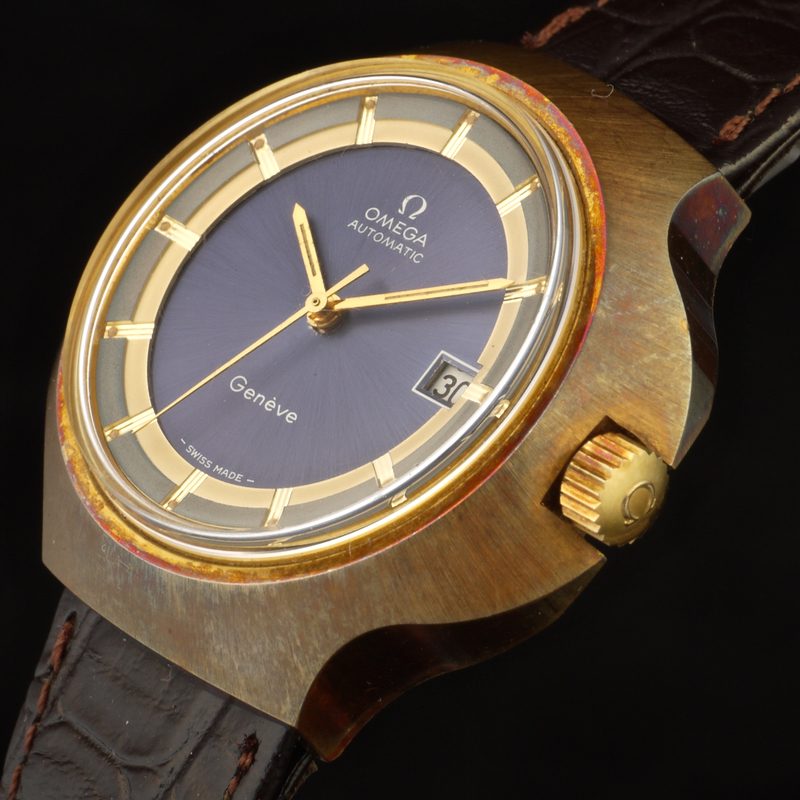
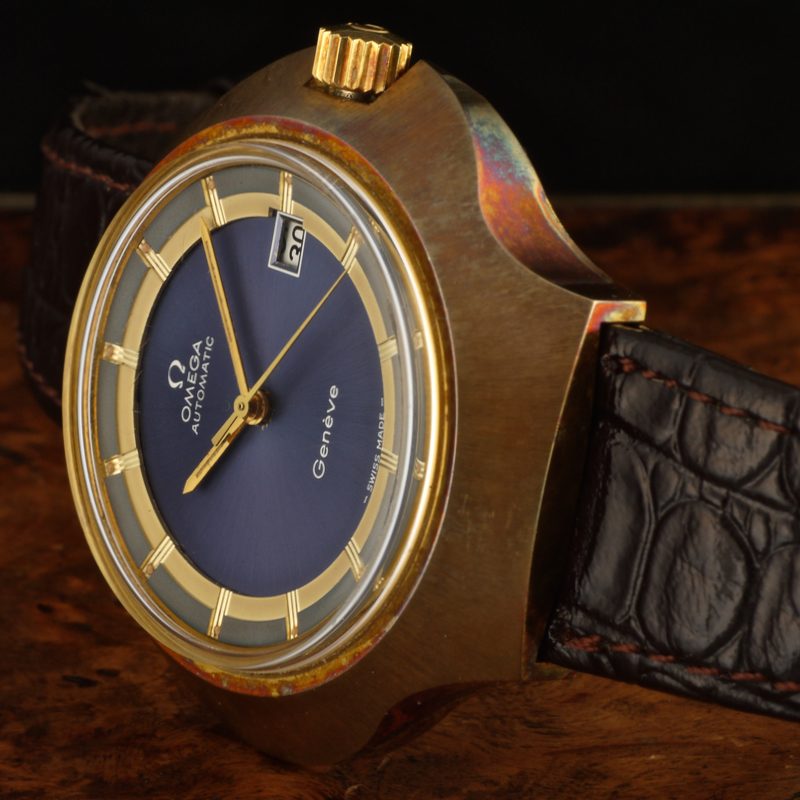
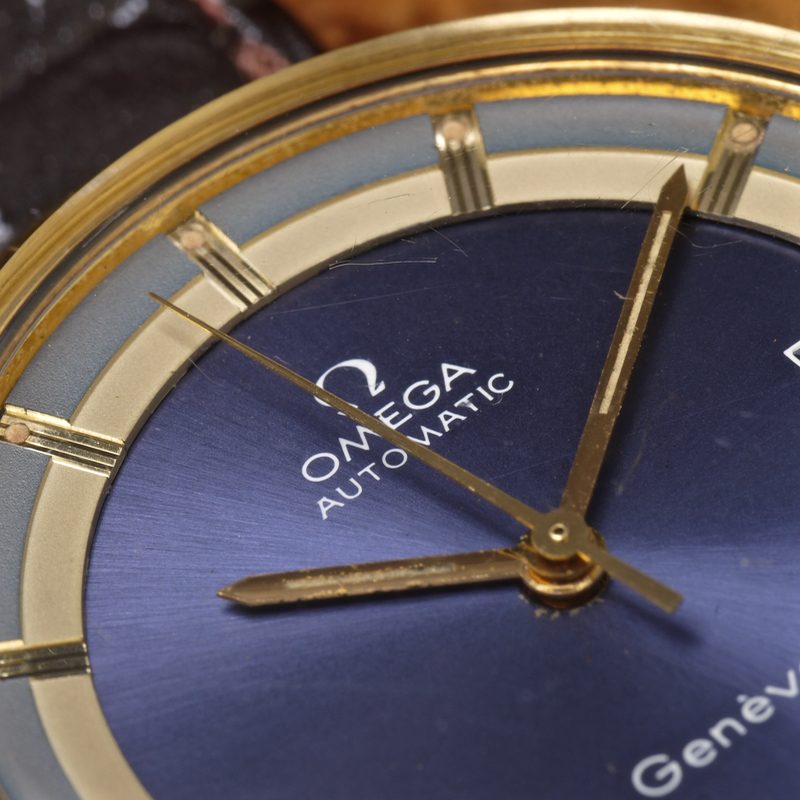
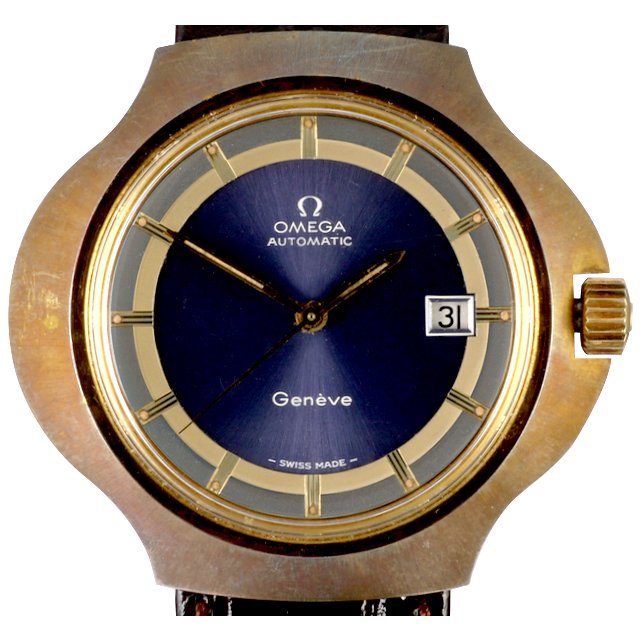
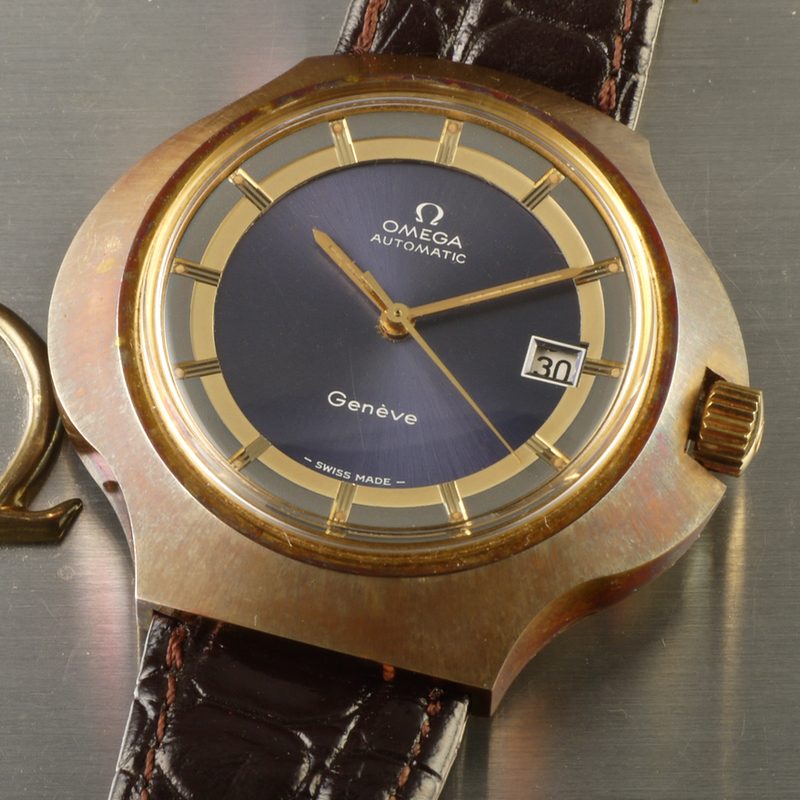
Omega Geneve
Apollo XVII, the last manned Moon landing to date, returns to Earth with 250 pounds of lunar samplesThe 1972 Omega Geneve ref. MD 166.0121 is a cool watch with its distinctive elliptical face and design borne of the free-living spirit of the late 60s and early 70s, 41 x 43 mm. 20 micron 14 carat gold plated sun-brushed case, integrated crown, automatic movement cal. 1481 base Tissot 784.
The Geneve line was created in 1953 as a homage to Omega workshops in Geneva where the best regulators were working. The line represents 60% of the brands production by 1970 and was discontinued in 1979 as the law in Geneva stipulates that a brand must have a presence in the canton of Geneva to include the word Geneva or any variation on the dial. At the beginning of the 70s, the latter gentleman’s model was offered to all male employees having worked at Omega for at least one year. Female employees had a funding supplement, which they could use toward any model of their choice, the majority chose the Dynamic.
Omega was founded in 1848 by Louis Brandt at the age of 23. The brand’s reputation grew fast and in 1895 the watches achieved a precision of 30 seconds a day.
By the turn of the 19th century Omega was one of Switzerland’s largest watch companies with 240,000 watches produced annually and employing 800 people.
Omega made its debut in sports during the Gordon Bennett international ballooning Cup in 1917; since then Omega has gone on to be the official timekeeper at 21 Olympic Games.
In 1936 Omega set the remarkable World precision record of 97.8 points at the Kew-Teddington observatory in England.
In 1957, with motorsport in mind, Omega launched the Speedmaster, which in 1965 was chosen by NASA as its official chronometer in Space. Four years later the Moonwatch was the first watch to be worn on the Moon, when on 21st July 1969 Neil Armstrong made his giant leap for mankind. Currently Omega belongs to the Swatch Group.
